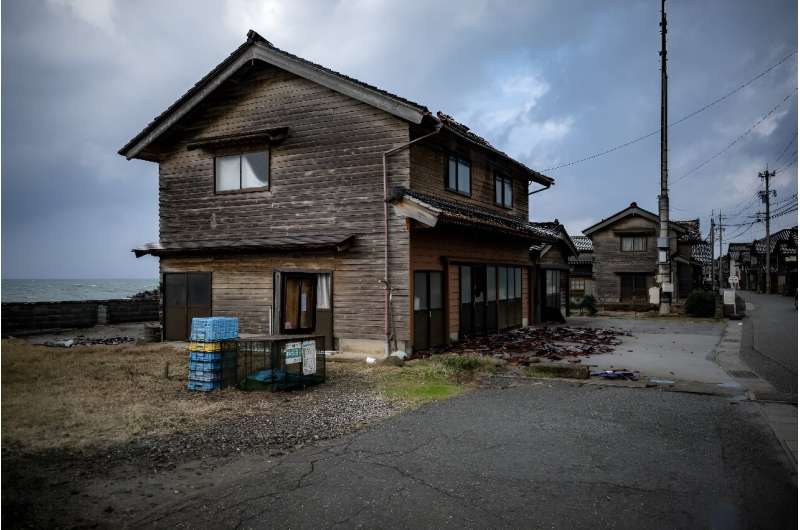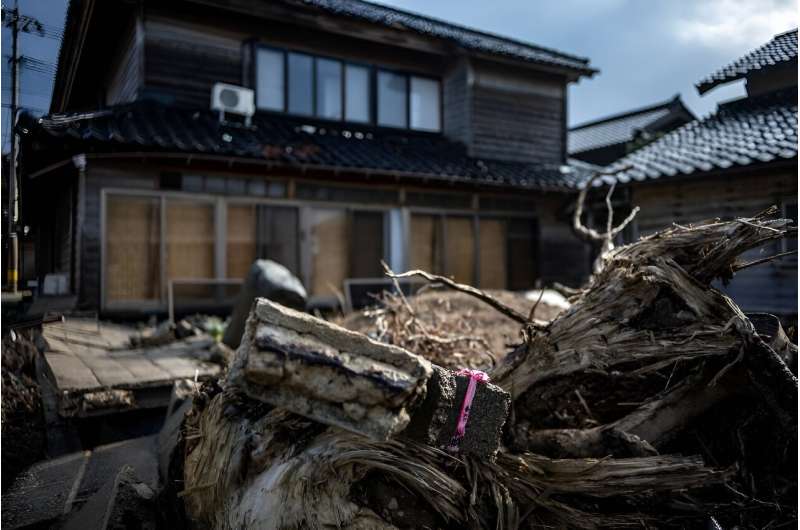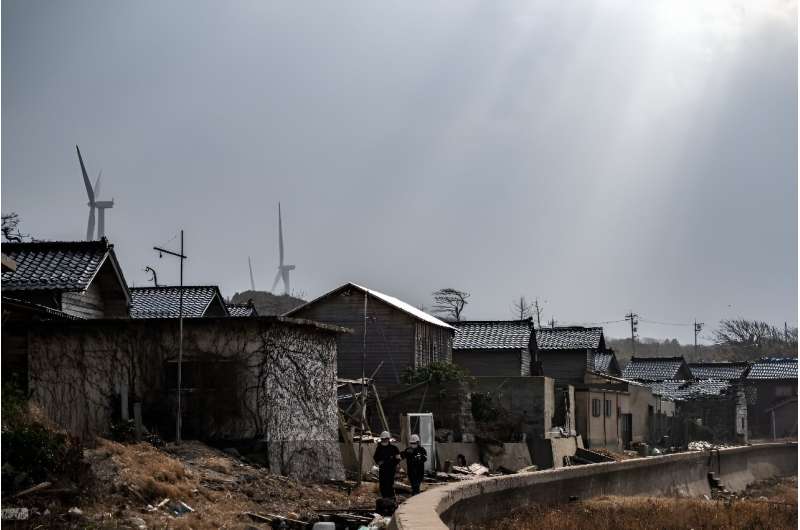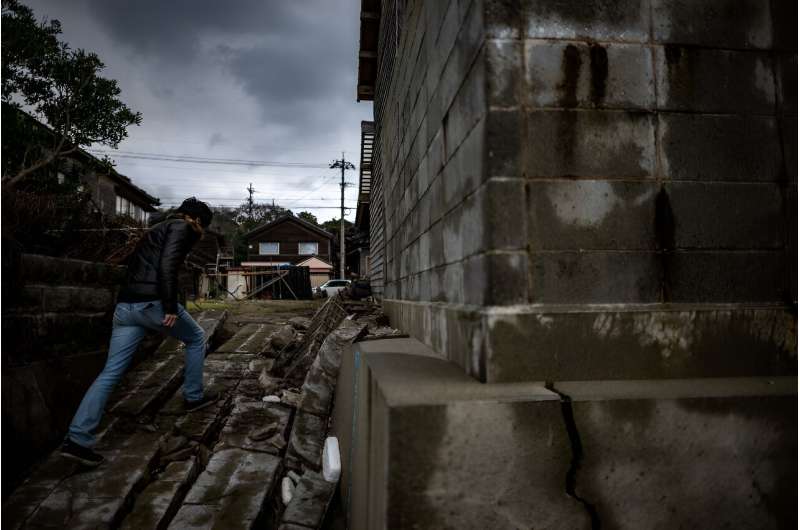This article has been reviewed according to Science X's editorial process and policies. Editors have highlighted the following attributes while ensuring the content's credibility:
fact-checked
reputable news agency
proofread
Still standing: unique houses survive quake in Japan village

The New Year's Day earthquake demolished wooden buildings all across Japan's Noto Peninsula but thanks to decades-old smart architecture, one small fishing village stood strong.
A few roof tiles came loose but not one of around 100 structures in windswept Akasaki, on the stick of land's western coast, collapsed in the magnitude 7.5 quake whose epicenter was just a few kilometers (miles) away.
Masaki Sato drove all night from his home 300 kilometers (190 miles) away in Tokyo after the quake to check on the 85-year-old house that he has owned since 2017 and runs as a summer B&B.
"The house stands on a very narrow lot of land, and the building has many small rooms, with many columns" that make it stronger, the 43-year-old told AFP.
To withstand the harsh rain, snow and ocean winds buffeting off the Sea of Japan, Sato's house and most others in Akasaki have few glass windows.
Their exterior walls are made from sturdy wooden slats, layered horizontally. The structure is supported by thick beams criss-crossing the ceiling.
The earthquake and its many aftershocks killed at least 161 people, and 103 others are still missing, authorities said on Monday.
But there were no casualties in the tight-knit village.

Even tsunami waves triggered by the earthquake didn't reach the houses, which are built on land slightly uphill from concrete tetrapods that protect them from the sea.
At Sato's place, ceramic dishes smashed, appliances toppled and a recently added wooden sliding door broke, leaving debris strewn across the floor.
But that was it.
"I felt so encouraged, because the village was still there standing," Sato said.
"I think it's thanks to the design of the houses," he added, sitting at the dusty but still solid kitchen counter in his guest house.
'Windshield'
The same lucky outcome was seen around the village, where "the design of the houses is more or less the same," said resident Seiya Shinagawa, a retired fisherman.
"Traditionally there's a shed on the coast as a windshield, with a narrow main house behind it," the 78-year-old said.

This setup is a remnant of the days when each fisherman would launch their boats out of their shed directly to the sea, Shinagawa said.
From around the 1920s, the community's fishermen opted for more lucrative deep-sea fishing far away from home, sometimes hauling in small fortunes for their catch.
But when a fire broke out and destroyed a significant part of the village in the late 1930s, people rebuilt the houses in a unified and stronger design.
Demographic threat
Now despite its resilient character, the village faces a problem that is widespread in Japan: a severely aging population.
Most people in Akasaki are over 65, with many living alone, including 74-year-old resident Akiyo Wakasa.
"My neighbor and their next-door neighbor also live alone," she said.
According to Wakasa, part of the problem is that "fixing houses costs money".

"I'm not sure how many people here actually think it would be worth fixing the house and continuing to live here when they have nobody to hand it down to," she explained.
For Sato, an IT firm employee who runs a real-estate renovation business on the side, seeing Akasaki entering a slow decline is unbearable.
The area is not recognized by the government as a cultural asset, but it's a place where people lead a simple, old-fashioned lifestyle, he said.
And when there's no one to live in a house, it's torn down—eroding the village's charm, according to Sato.
"Akasaki, which has preserved a unique and uniform housing design... is losing its scenic appearance."
To save Akasaki's special look, Sato has purchased five of the houses and sheds himself, and wants eventually to open some cafes and restaurants there.
"The village is too precious to lose," he said.
© 2024 AFP



















